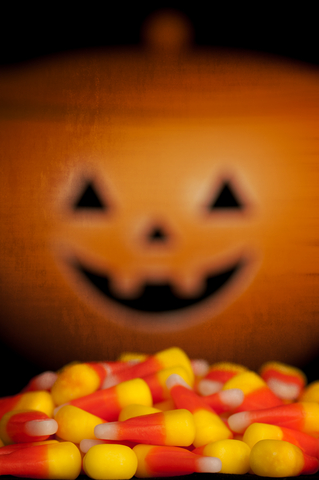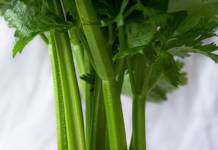
Halloween is just around the corner, which means your children will be Trick-or-Treating for candy. While the time-honored tradition of going from house to house hasn’t changed much in the past 50 years, the type of candy being given out certainly has. Just because you won’t find poisoned candy or apples with razor blades in your child’s bag doesn’t mean today’s Halloween candy doesn’t pose real health risks.
Scary Additives in Halloween Candy
It is estimated that Americans spend roughly 2 billion dollars on candy and consume 26 pounds of it each year. Most commercial confectioner products are highly-processed and filled with harmful additives that could lead to a lifetime of health problems when consumed often.
Let’s take a closer look at these scary additives:
- Palm Kernel Oil
Not to be confused with red palm oil, palm kernel oil is extracted from the pit with a gasoline-like hydrocarbon solvent. The result is cheap, unhealthy oil that is not safe to consume.
- Soy Lecithin
Soy lecithin may look harmless but it’s a pretty scary ingredient in your Halloween candy. Research has shown that 85% of soy is genetically modified. This means when your child consumes candy which contains soy, they may be exposed to a gut-destroying BT toxin that could set them up for a lifetime of gastrointestinal and neurological problems.
Soy is also filled with phytoestrogens and isoflavones that have been shown to block normal estrogen and disrupt endocrine function. This leads to increased chances of abnormal puberty in boys, delayed puberty in girls, and infertility in both genders. Consumption of unfermented soy has also been linked to the development of breast cancer.
What’s worse, the highly-neurotoxic food additive, monosodium glutamate (MSG) is formed during the processing of soy and more is often added to mask the unappealing natural taste of soy.
- PGPR
For the past 5 years, a new emulsifier called polyglycerol polyricinoleate (PGPR) has quietly replaced cocoa butter in an effort to cut down on manufacturing costs. PGPR is formed from castor oil, which reduces the viscosity of chocolate. This chemical has been shown to cause gastrointestinal discomfort and allergic reaction in children.
- High Fructose Corn Syrup
High fructose corn syrup is a synthetic sweetener most often derived from genetically modified corn. Any genetically modified food comes with serious health risks because these foods have dangerous pesticides built right in. HFCS has been linked to obesity, allergies, diabetes, metabolic disorder, gastrointestinal complaints, autoimmune disease, and chronic headaches.
- Food Dyes
Multicolored, super-sweet Halloween candy often contains food dyes such as Red #40, BlueLake, Yellow #5, and more. These dyes have been linked to the development of neurological disorders, behavioral problems, learning disabilities, insomnia, chronic headaches, and gastrointestinal upset.
- TBHQ
Tertiary butylhydroquinone, or TBHQ, is a synthetic additive derived from petroleum and it is used to preserve freshness. According to the FDA, TBHQ is only regarded as safe in small doses.
Some studies show that it exacerbates ADD and ADHD. Research in this area is ongoing.
Ingesting a single gram of this preservative has been shown to cause nausea, vomiting, tinnitus, shortness of breath, delirium, and fainting. How much Halloween candy can your child eat in one sitting?
- Sucralose (Splenda)
Since more health-conscious consumers have started to wise up about the health dangers of aspartame and high fructose corn syrup, a newer sweetener called Splenda hit the market. Unfortunately, sucralose is no better for your child’s health. Sucralose is a chemically-derived sweetener that has been linked to metabolic syndrome, heart disease, reduced healthy gut bacteria, increased fat storage, and carbohydrate cravings.
- Sodium Benzoate
Sodium benzoate is a preservative that, when combined with ascorbic acid (synthetic vitamin C), creates a carcinogenic chemical called benzene. This preservative can be found in orange candies like candy corn and candy pumpkins. It often has a tell-tale bitter aftertaste.
Reduce Your Health Risks of Halloween Candy
It can be difficult to explain to your child that the candy they look forward to getting every year is bad for them. After all, half the fun is going to as many houses and possible and trading with friends!
Here are a few ideas for reducing your child’s health risks:
- Eat the Candy in a Short Amount of Time
If you and your child are going to indulge in foods that could potentially be harmful, the best thing you can do is eat it quickly (watch out for TBHQ). Grazing on the candy for months can be more harmful to your health than eating it in a shorter amount of time until it’s gone. If your child comes home with pounds of candy, allow them to consume only a small ration of the candy and donate the rest to a Halloween candy buy-back program.
- Trade with Your Child
This Halloween, invest in a bag of organic, natural candies to trade with your child when he or she comes home from Trick-or-Treating. This way, they’ll have the experience of going out to get the candy without the negative health effects of consuming it.
- Choose Trick-or-Treat Alternatives
Just because it’s Halloween doesn’t mean your child has to go Trick-or-Treating. “Haunted” houses, hayrides, Halloween parties, and costume contests are all fun alternatives to going door-to-door collecting treats. Though candy may be served at these events, your child will only be exposed to them for one night.
- Try Candy Alternatives
Let’s face it, a lot of the candy your child gets in his bucket this year, you probably passed out last year. Halloween candy doesn’t go bad easily because it’s filled with preservatives. With that in mind, try some candy alternatives. Bubbles, fake plastic bugs, pencils, stickers, bouncy balls, fake tattoos, glow sticks, and crayons are all fun things to pass out to neighborhood kids and use to trade with your own children when they come home.
Halloween only comes once a year but the harmful health risks of candy can last much longer. Protect your child’s health by limiting the amount of processed food they consume and offering fun alternatives to consuming vast amounts of candy. They may be disappointed at first, but when you show them the way they’ll quickly follow your lead.








